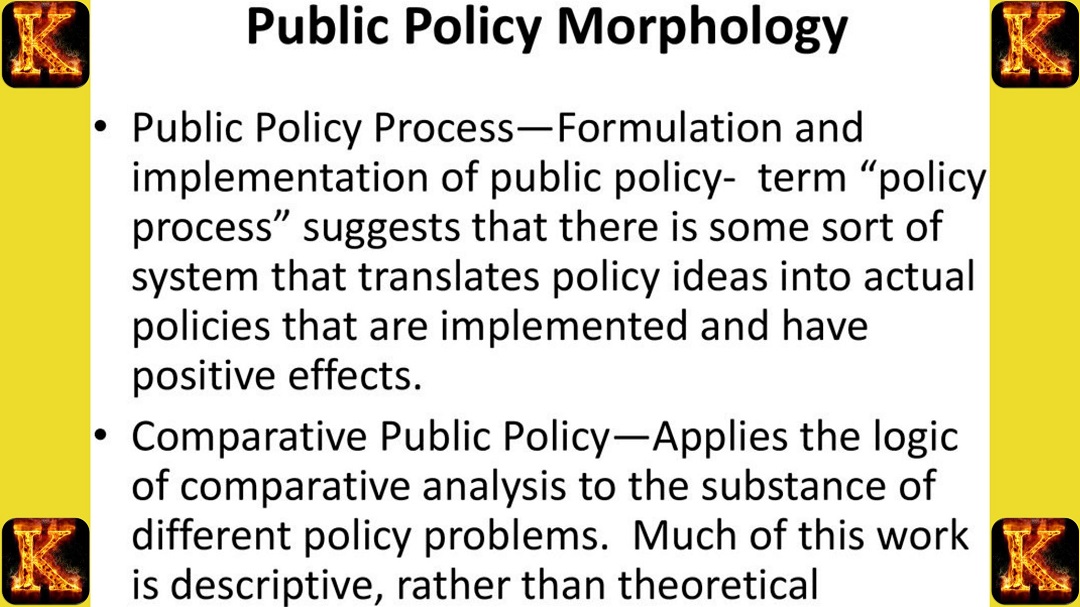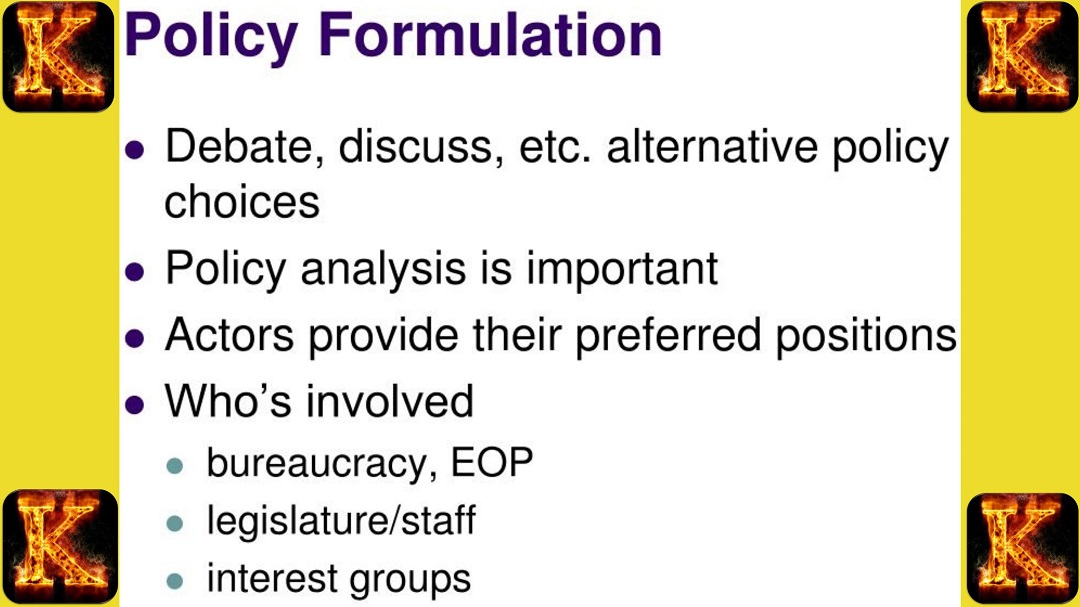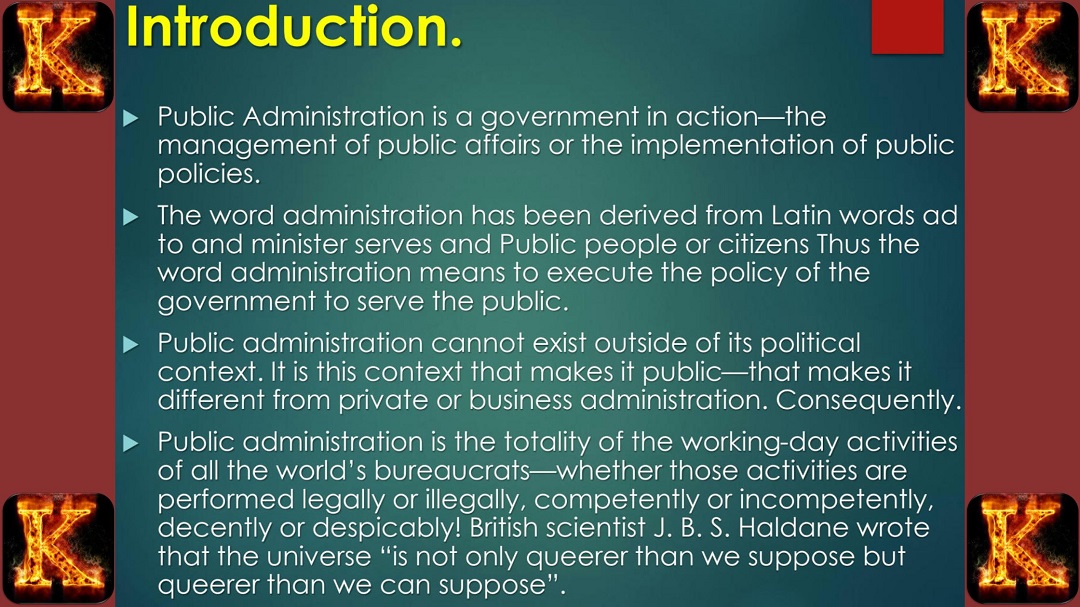Introduction
Public policy plays a crucial role in shaping the structure and function of society. It encompasses the laws, regulations, and actions that governments employ to address public issues, regulate behaviors, and ensure the welfare of their citizens. The formulation, adjudication, and implementation of public policy are intricate processes that involve various stakeholders, including governmental institutions, non-governmental organizations, and the public.
This essay aims to explore the substance of public policy by describing its role in society, how it is formulated, adjudicated, and implemented, and examining legitimate and illegitimate domains of public policy. Additionally, it will compare the ideal policy process to the actual policy process in practice. By understanding these aspects, one can better appreciate the complexities and importance of public policy in governing societal affairs.
The Role of Public Policy in Society
Public policy serves as a comprehensive framework for
decision-making and action that encapsulates the goals and values of a society. It functions to address a myriad of societal issues, promote social justice, and ensure the efficient allocation of resources. Public policy manifests in various forms such as laws, regulations, executive orders, and judicial rulings, all designed to guide behavior and achieve desired outcomes. By understanding its multifaceted role, one can better appreciate the importance of public policy in maintaining societal order and progress.

Problem Solving
Public policy plays a crucial role in identifying and addressing societal problems, offering solutions that benefit the public. It involves recognizing issues that affect society at large, such as poverty, crime, and public health crises, and formulating strategies to tackle these challenges. For instance, policies aimed at reducing unemployment involve creating job opportunities and providing vocational training programs.
- Example: Public health policies during the COVID-19 pandemic, such as lockdowns and vaccination drives, were implemented to control the spread of the virus and protect public health.
Regulation
Regulation is a fundamental aspect of public policy, establishing standards and guidelines to ensure the safety, health, and welfare of the public. This includes setting rules for industries, enforcing safety standards, and monitoring compliance to protect citizens from harm.
- Example: Environmental regulations that limit pollution from factories to protect air and water quality.
Resource Allocation
Public policy determines how resources are distributed and utilized, ensuring that public goods and services are accessible to all. This involves budgetary decisions, funding public services like education, healthcare, and infrastructure, and managing natural resources responsibly.
- Example: Policies that allocate funds for building and maintaining public schools, ensuring access to education for all children.
Social Justice
A key objective of public policy is to
promote social justice, aiming to create a fair and equitable society. It seeks to protect the rights of marginalized and vulnerable populations, reduce inequalities, and ensure equal opportunities for all individuals.
- Example: Anti-discrimination laws that protect individuals from racial, gender, and other forms of discrimination in the workplace and public spaces.
Economic Stability
Public policy supports economic growth and stability by creating favorable conditions for business and investment. It involves crafting economic policies that foster sustainable development, control inflation, and reduce unemployment.
- Example: Tax incentives for small businesses to stimulate entrepreneurship and economic development.

The Substance of Public Policy: Formulation, Adjudication, and Implementation
Understanding the substance of public policy requires examining the intricate processes of formulation, adjudication, and implementation. Each stage is critical in shaping how policies address societal needs and impact public life.
Formulation
The formulation of public policy involves identifying issues, setting agendas, and developing solutions. This process is influenced by political ideologies, public opinion, interest groups, and expert advice. Key stages in policy formulation include:
Agenda Setting
Identifying and prioritizing issues that require governmental action is the first step in policy formulation. Agenda setting involves
recognizing societal problems, often highlighted by media, public opinion, or advocacy groups, and determining which issues are worthy of policy intervention.
- Example: The rising concern over climate change leading to the prioritization of environmental policies.
Policy Development
Crafting potential solutions and evaluating their feasibility and impact involves generating various policy options and assessing their potential benefits, costs, and effectiveness. This stage includes consultations with stakeholders, experts, and the public to refine policy proposals.
- Example: Developing multiple approaches to healthcare reform, such as public insurance options versus private market solutions.
Policy Adoption
Selecting and enacting the most appropriate policy solution through legislative, executive, or administrative means involves formalizing the chosen policy option into law or regulation. This requires gaining support from lawmakers, government officials, and other influential actors.
Adjudication
Adjudication refers to the legal interpretation and application of public policy. This process involves the judiciary, which reviews and resolves disputes related to policy implementation and ensures that policies adhere to constitutional and legal standards. The stages of adjudication include:
Judicial Review
Courts review policies to ensure they are constitutional and legally sound. Judicial review acts as a check on the other branches of government, preventing the enactment or continuation of policies that violate
legal principles.
- Example: The Supreme Court reviewing the constitutionality of the Affordable Care Act's individual mandate.
Dispute Resolution
Courts settle disputes between parties affected by policy decisions. This involves interpreting the policy in question and determining the appropriate resolution based on legal principles and precedents.
- Example: Lawsuits challenging environmental regulations that affect business operations.
Legal Interpretation
Judges interpret the meaning and scope of policies, providing clarity and guidance for implementation. This interpretation can influence how policies are applied in future cases and can lead to the development of new legal standards.
- Example: Court rulings that clarify the extent of civil rights protections under anti-discrimination laws.
Implementation
Implementation is the process of putting public policy into action. It involves the translation of policy decisions into practical programs and actions by various governmental agencies. The stages of implementation include:
Planning
Developing detailed plans and strategies for executing policy decisions involves creating frameworks and guidelines that outline how the policy will be carried out, including resource allocation, timelines, and responsibilities.
Execution
Carrying out policy actions through government agencies and other stakeholders involves the practical application of the policy, such as providing services, enforcing regulations, or distributing resources.
- Example: Public health departments administering vaccines as part of an immunization policy.
Monitoring and Evaluation
Assessing the effectiveness of policy implementation and making necessary adjustments involves ongoing review and analysis to ensure that the policy achieves its intended outcomes. This stage includes collecting data, evaluating performance, and making adjustments to improve effectiveness.
- Example: Evaluating the impact of education reform policies on student performance and making changes based on the findings.
The substance of public policy encompasses the comprehensive processes of formulation, adjudication, and implementation. Each stage is essential for developing, enacting, and enforcing policies that address societal issues and
promote public welfare. By understanding these processes, policymakers, stakeholders, and the public can better navigate the complexities of public policy and work towards more effective and equitable outcomes.
Legitimate and Illegitimate Domains of Public Policy
Public policy covers a wide range of areas that significantly impact society. However, there are clear distinctions between domains where public policy is considered legitimate and those where it is deemed illegitimate. These distinctions are based on the extent to which policies align with the principles of justice, equality, and public welfare.
Legitimate Domains of Public Policy
Healthcare
Public policy in healthcare is vital for ensuring access to
quality healthcare services and addressing public health issues. This includes creating policies that provide affordable healthcare, improve healthcare infrastructure, and promote public health initiatives. Effective healthcare policies aim to enhance the well-being of citizens, reduce health disparities, and respond to health crises.
- Example: The Affordable Care Act (ACA) in the United States, which aimed to expand healthcare coverage and reduce healthcare costs, ensuring that more people have access to medical services.
Education
Education is a fundamental right, and public policy plays a crucial role in providing equitable access to education and improving educational standards. Policies in this domain focus on ensuring that all individuals, regardless of their
socio-economic background, have access to quality education, thereby promoting social mobility and economic development.
- Example: Public funding for K-12 education and policies that support higher education affordability, such as Pell Grants in the United States.
Environmental Protection
Environmental protection policies are essential for safeguarding natural resources and addressing environmental challenges such as climate change, pollution, and biodiversity loss. These policies aim to promote sustainable development, ensure clean air and water, and protect ecosystems.
- Example: The Clean Air Act and the Clean Water Act in the United States, which regulate emissions and discharge to protect air and water quality.
Illegitimate Domains of Public Policy
Infringement on Personal Freedoms
Policies that excessively restrict individual rights and freedoms without justified cause are considered illegitimate. Such policies may infringe on personal liberties, including freedom of speech, privacy, and movement, and often lack adequate justification.
- Example: Policies that impose blanket surveillance on citizens without reasonable cause or due process.
Discrimination
Policies that discriminate against specific groups based on race, gender, religion, or other characteristics are inherently unjust and illegitimate. Discriminatory policies perpetuate inequality, marginalize vulnerable populations, and
violate fundamental human rights.
- Example: Historical examples include segregation laws in the United States that enforced racial discrimination.
Unjust Economic Policies
Policies that disproportionately benefit the wealthy or powerful at the expense of the general public are considered illegitimate. Such policies exacerbate economic inequalities, concentrate wealth and power in the hands of a few, and undermine the principles of fairness and equity.
- Example: Tax policies that provide significant tax breaks to large corporations and the wealthy while increasing the tax burden on low- and middle-income individuals.
Public policy plays a critical role in addressing societal needs and promoting the common good. Legitimate domains of public policy, such as healthcare, education, and
environmental protection, are essential for ensuring a fair and just society. Conversely, policies that infringe on personal freedoms, discriminate against specific groups, or create economic injustices are illegitimate and counterproductive. By focusing on legitimate domains, public policy can effectively contribute to the well-being and advancement of society.

Ideal vs. Actual Policy Process
Ideal Policy Process
In an ideal scenario, the policy process should be characterized by transparency, inclusivity, and evidence-based decision-making. These principles ensure that policies are well-informed, broadly supported, and effectively implemented. The
ideal policy process involves the following steps:
Inclusive Participation
Engaging all relevant stakeholders, including marginalized groups, is crucial for developing comprehensive and equitable policies. Inclusive participation ensures that diverse perspectives are considered, leading to more robust and effective solutions.
- Example: Holding public forums, consultations, and stakeholder meetings to gather input from various community members and interest groups.
Evidence-Based Decision Making
Utilizing data and research to inform policy decisions is essential for creating effective and sustainable policies.
Evidence-based decision-making relies on scientific research, empirical data, and best practices to guide policy formulation and implementation.
- Example: Using health data and scientific research to develop public health policies that effectively address issues such as vaccination coverage and disease prevention.
Transparency and Accountability
Ensuring that the policy process is open and accountable to the public builds trust and legitimacy. Transparency involves clear communication of policy decisions, rationales, and processes, while accountability means holding policymakers responsible for their actions and outcomes.
- Example: Publicly accessible records of policy deliberations, decisions, and performance evaluations, along with mechanisms for citizens to provide feedback and hold officials accountable.
Actual Policy Process
In reality, the policy process often deviates from the ideal due to various political, economic, and
social influences. These deviations can undermine the effectiveness and fairness of policies. Common issues in the actual policy process include:
Political Influence
Policies may be shaped by political agendas and power dynamics rather than the public interest. Political influence can lead to policies that prioritize the interests of powerful groups or individuals over the needs of the broader population.
- Example: Legislation that benefits corporate donors or special interest groups at the expense of the general public, such as tax breaks for large corporations.
Limited Participation
Certain groups may be excluded from the policy-making process, leading to biased outcomes that do not fully address the needs of all affected populations. Limited participation can result from systemic barriers, such as lack of access to decision-making forums or
socio-economic disparities.
- Example: Marginalized communities, such as low-income or minority groups, being underrepresented in policy discussions, leading to policies that do not adequately address their concerns.
Lack of Transparency
The policy process may lack transparency, making it difficult for the public to understand and engage with policy decisions. A lack of transparency can erode public trust and prevent effective oversight of policymakers.
- Example: Decisions made behind closed doors without public input or disclosure, leading to skepticism and mistrust among citizens.
While the ideal policy process emphasizes inclusivity, evidence-based decision-making, and transparency, the actual policy process often falls short due to political influence, limited participation, and
lack of transparency. Addressing these issues requires concerted efforts to enhance public engagement, ensure data-driven policy-making, and promote accountability among policymakers. By striving towards the ideal, societies can develop more effective and equitable public policies that better serve the common good.

Conclusion
The substance of public policy is a multifaceted and dynamic aspect of governance that plays a vital role in shaping society. By understanding how public policy is formulated, adjudicated, and implemented, one can better appreciate its impact on
societal welfare and governance. While there are legitimate and illegitimate domains of public policy, striving for an ideal policy process that is transparent, inclusive, and evidence-based can help address societal issues effectively and equitably. Public policy remains a powerful tool for promoting social justice, economic stability, and the overall well-being of society.





Comments are closed!